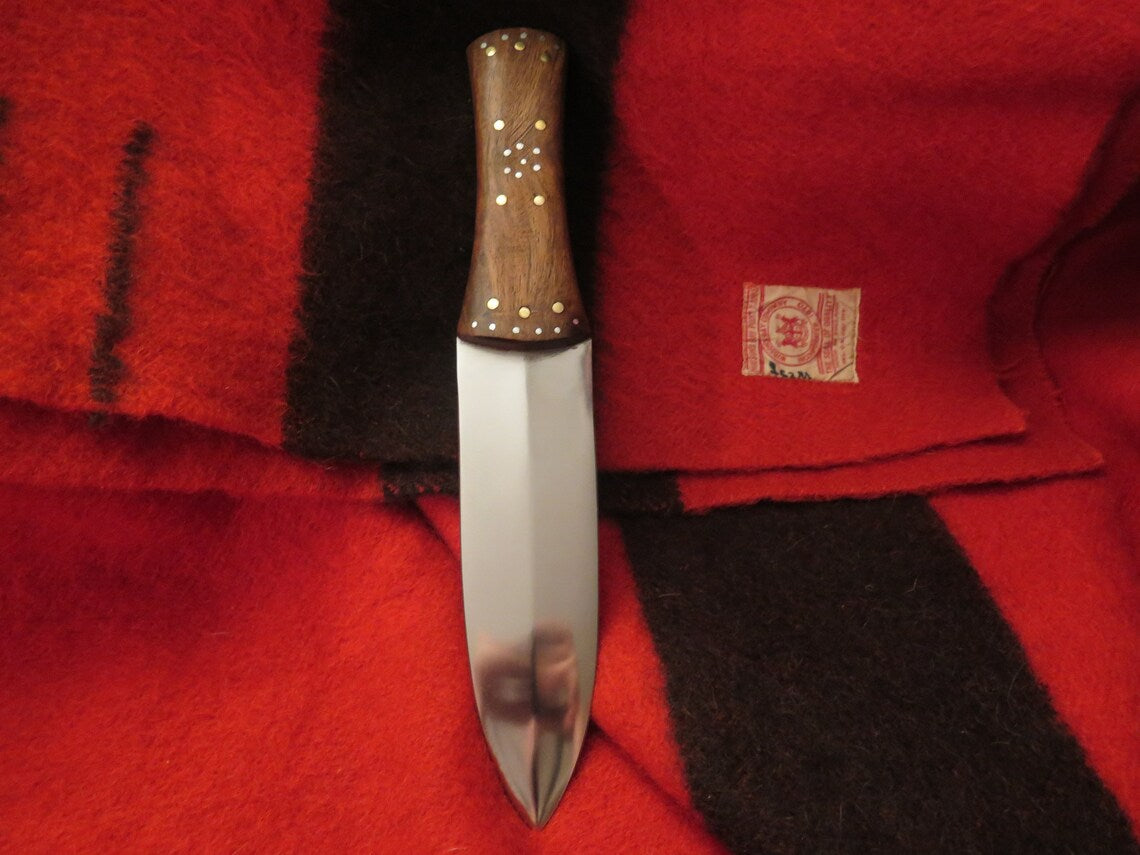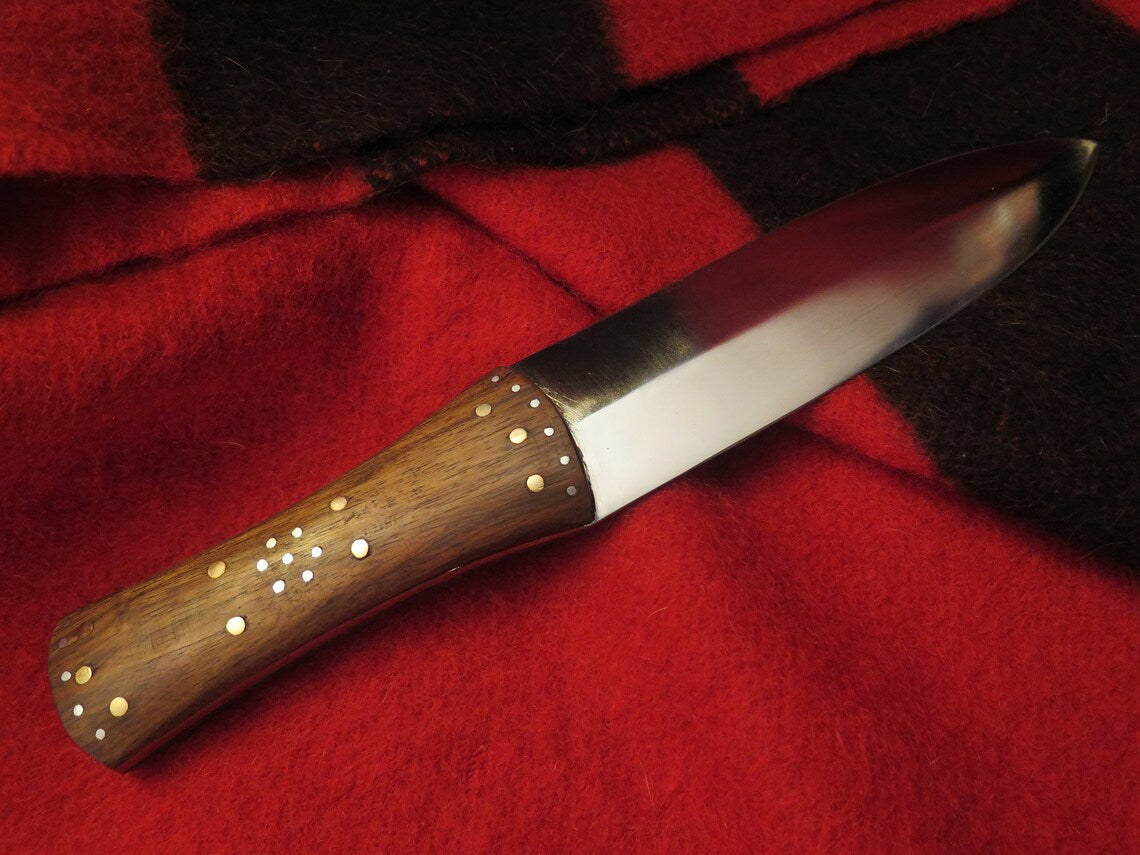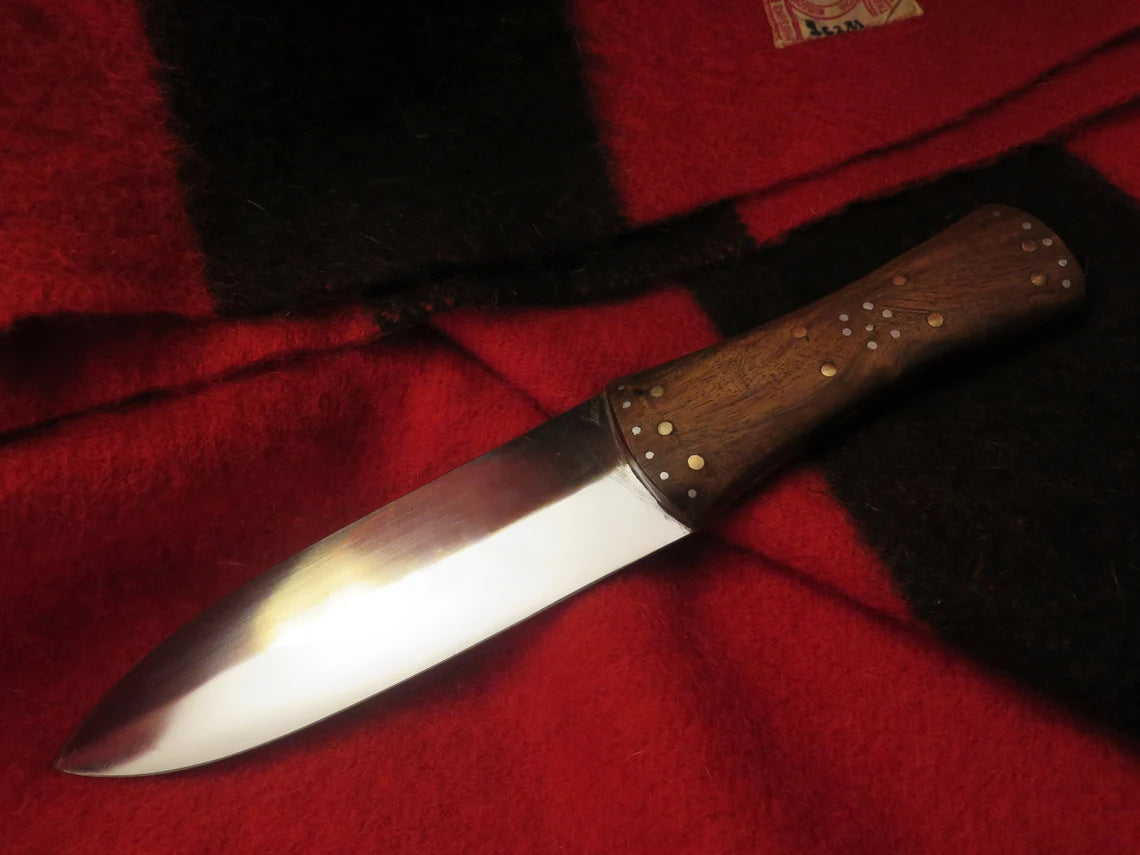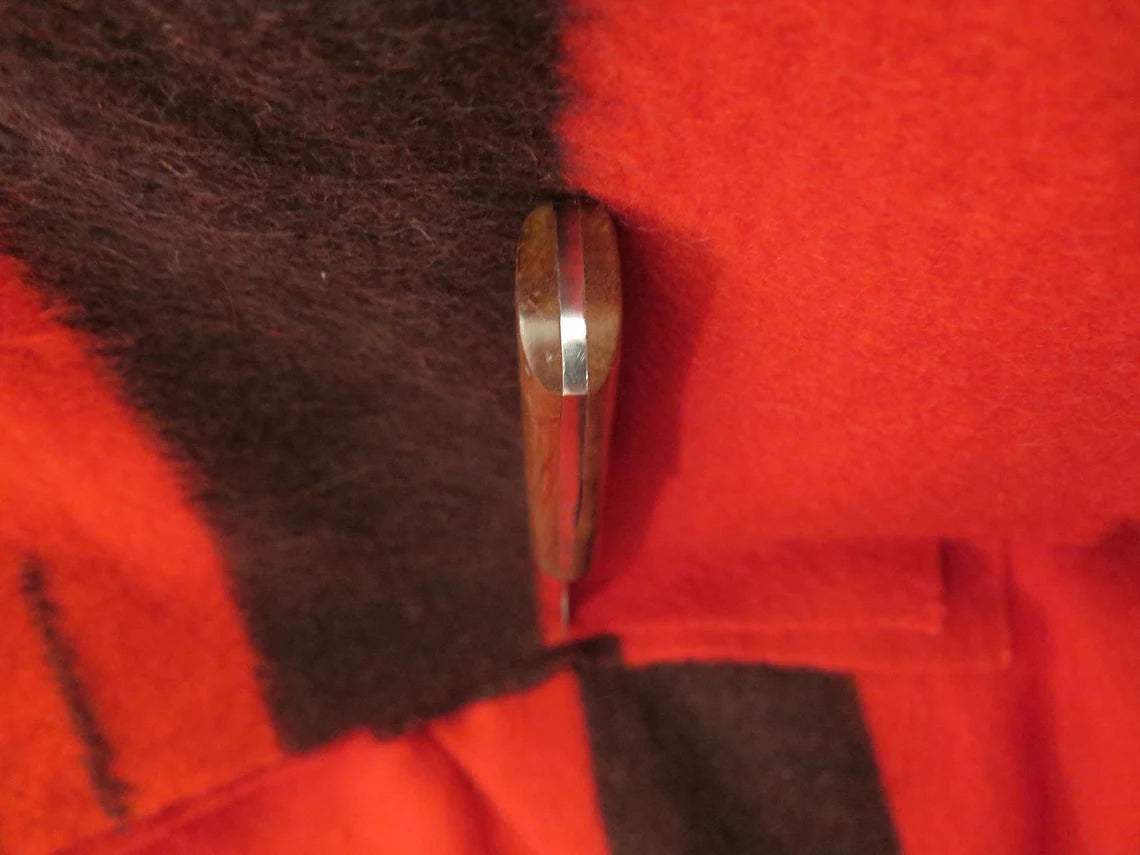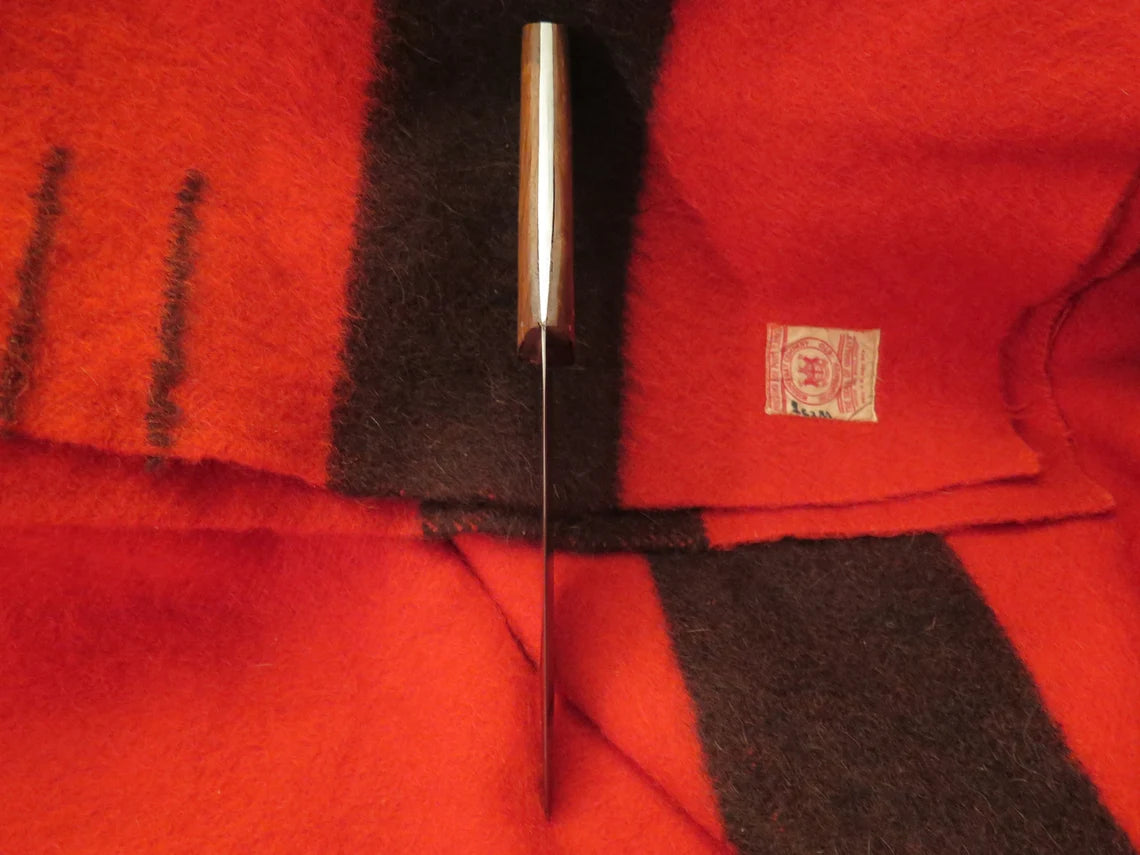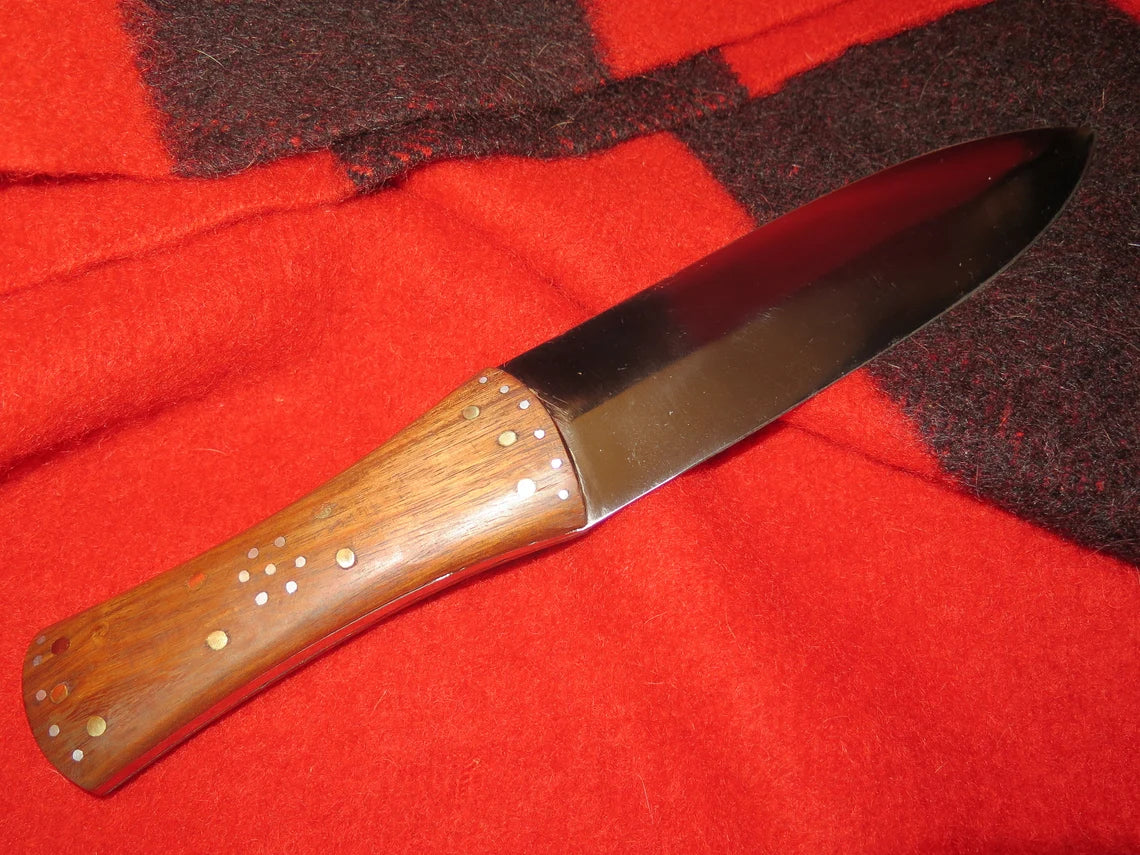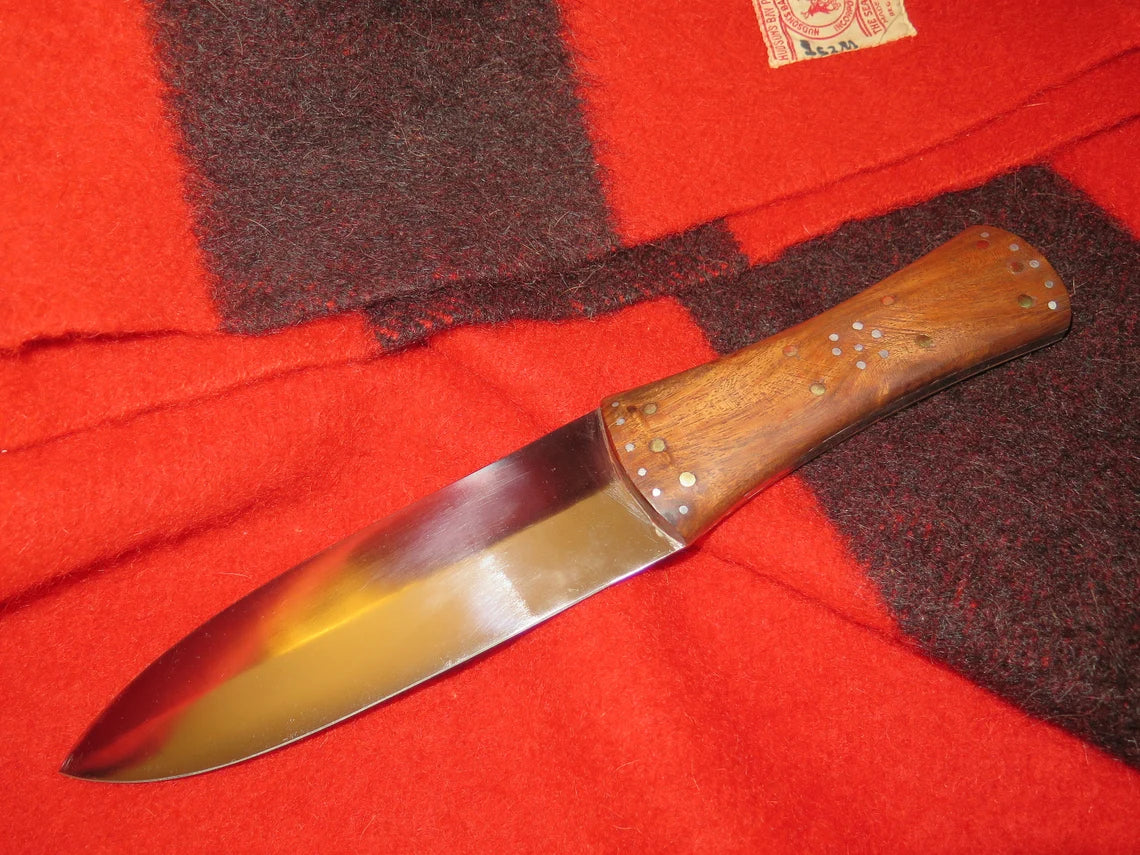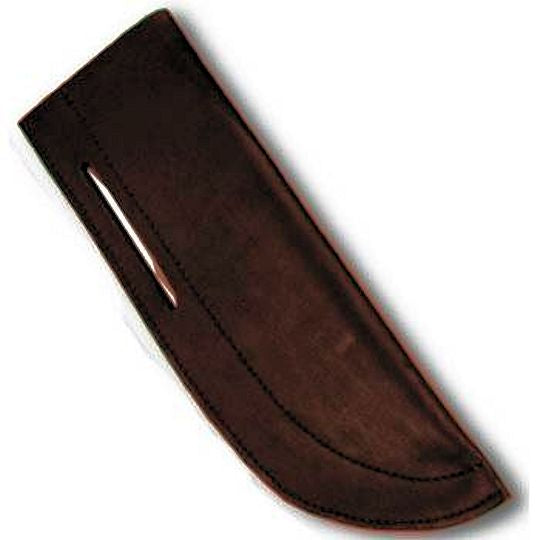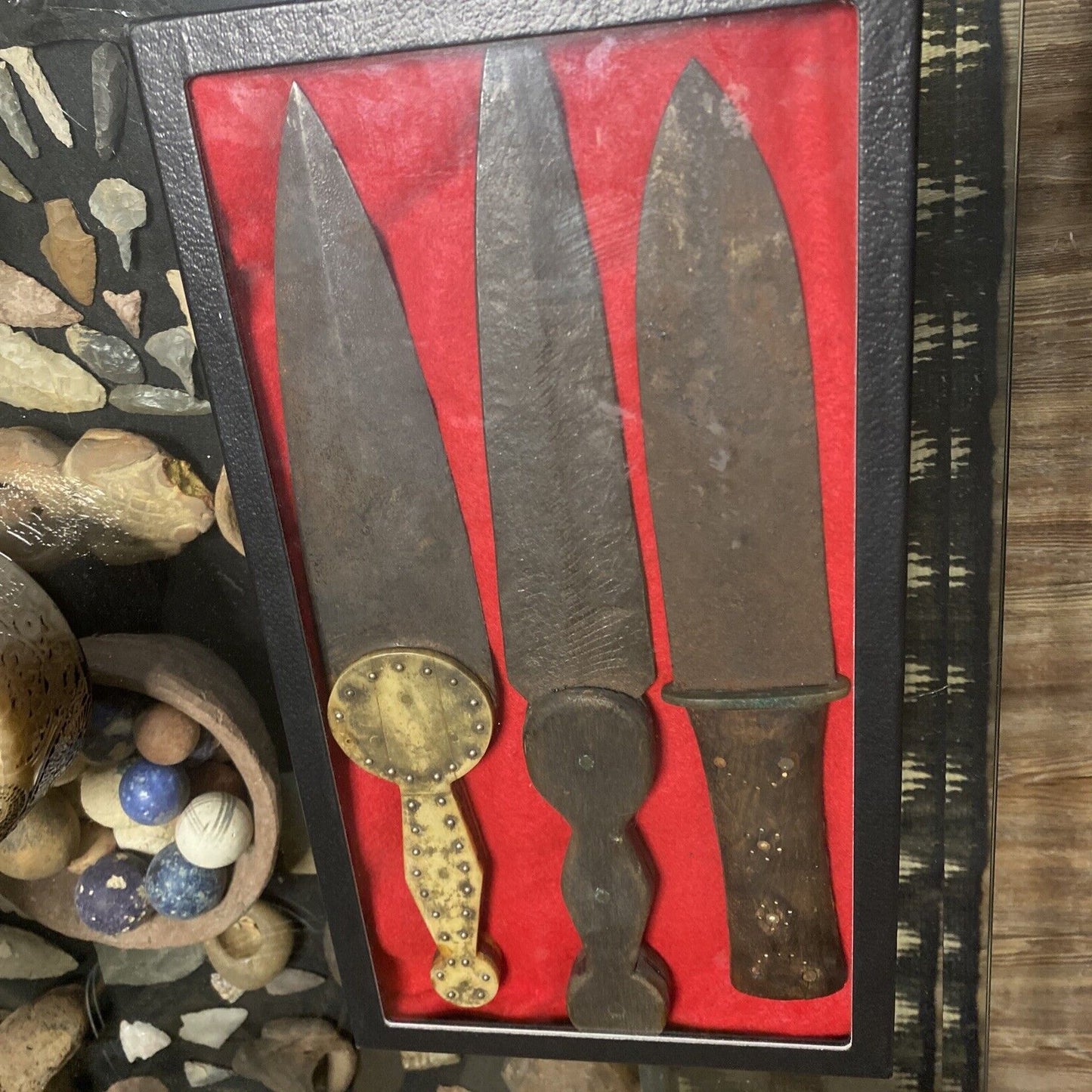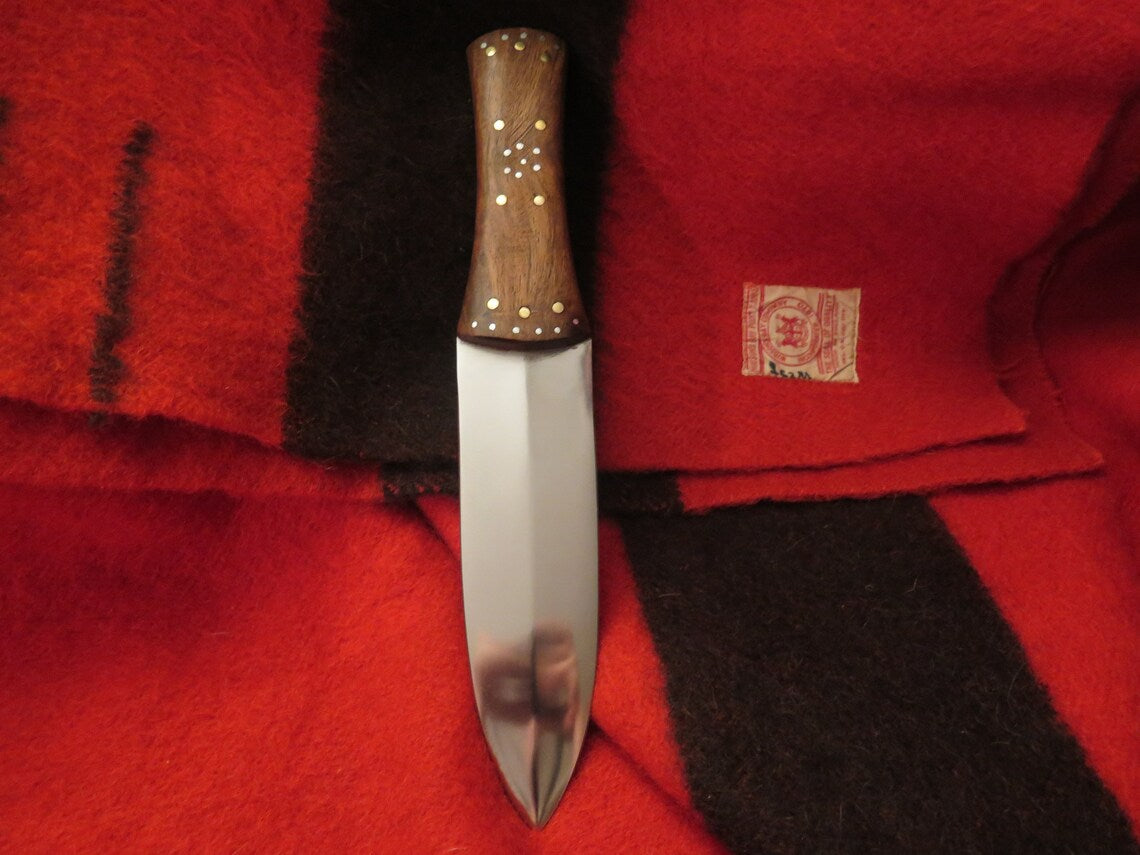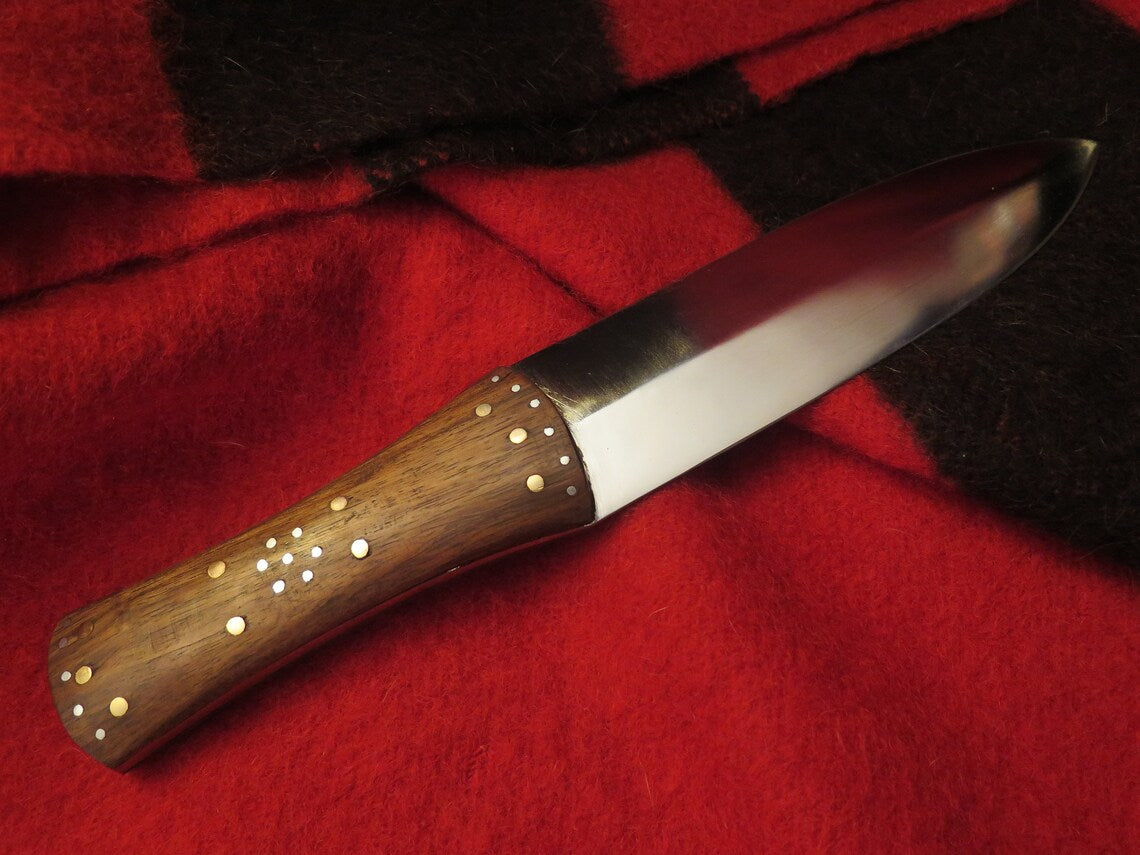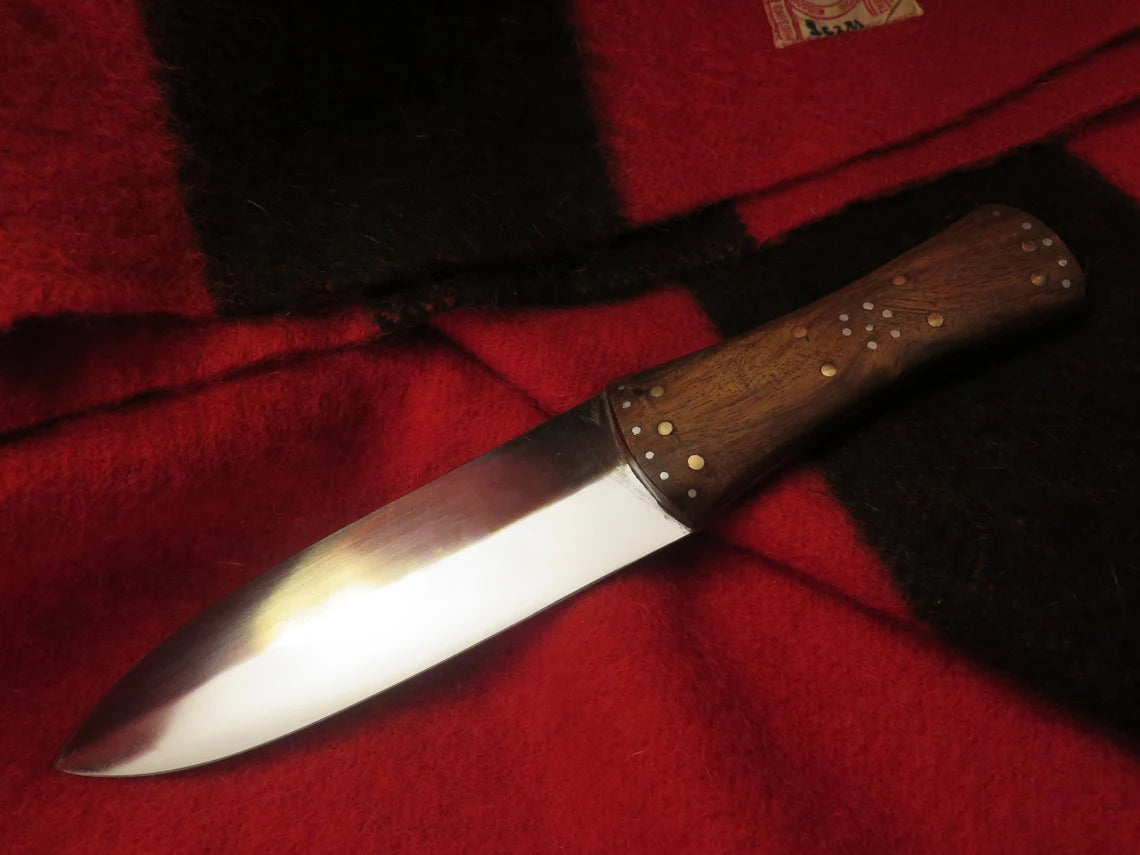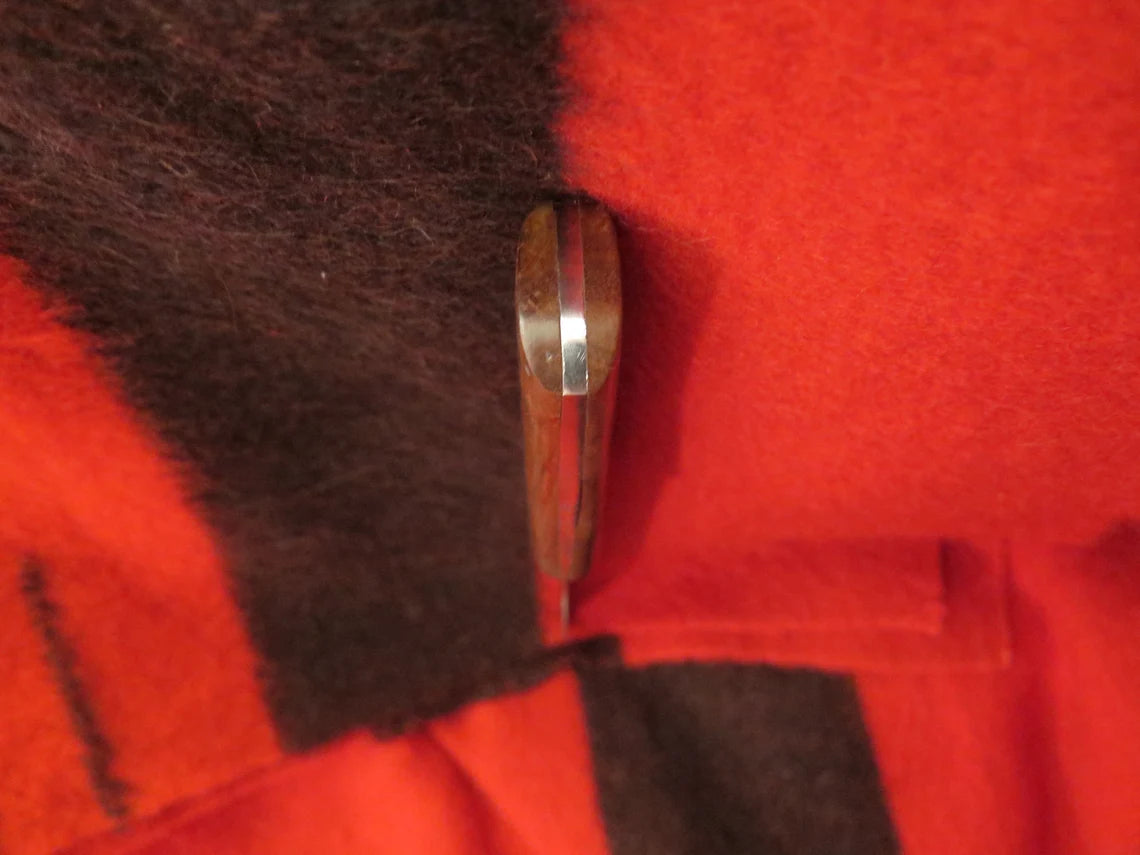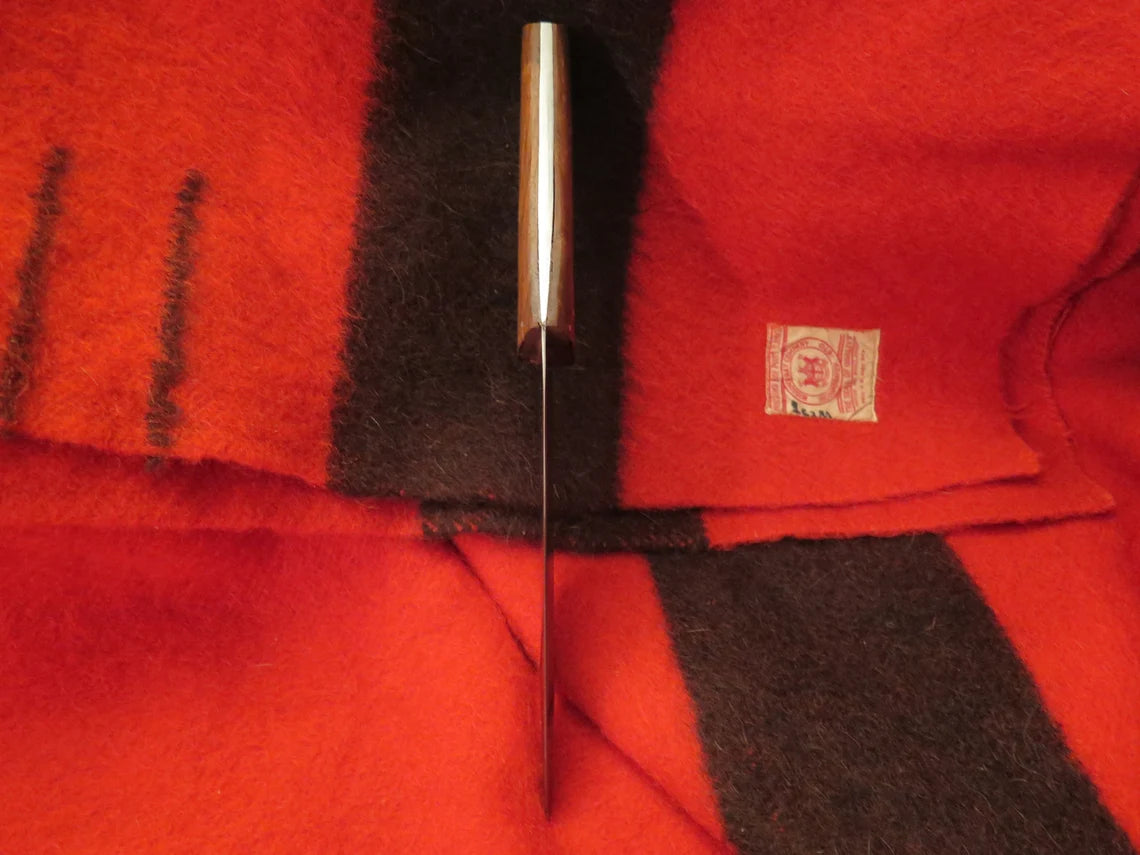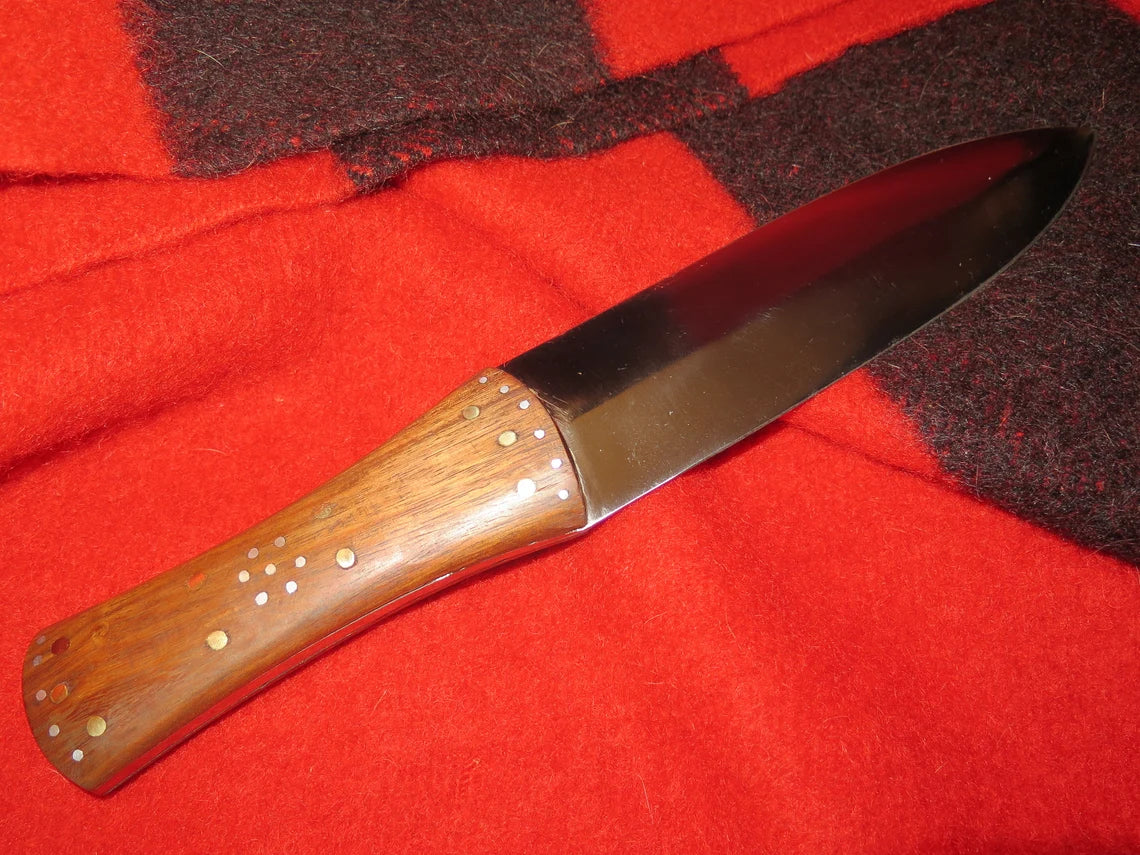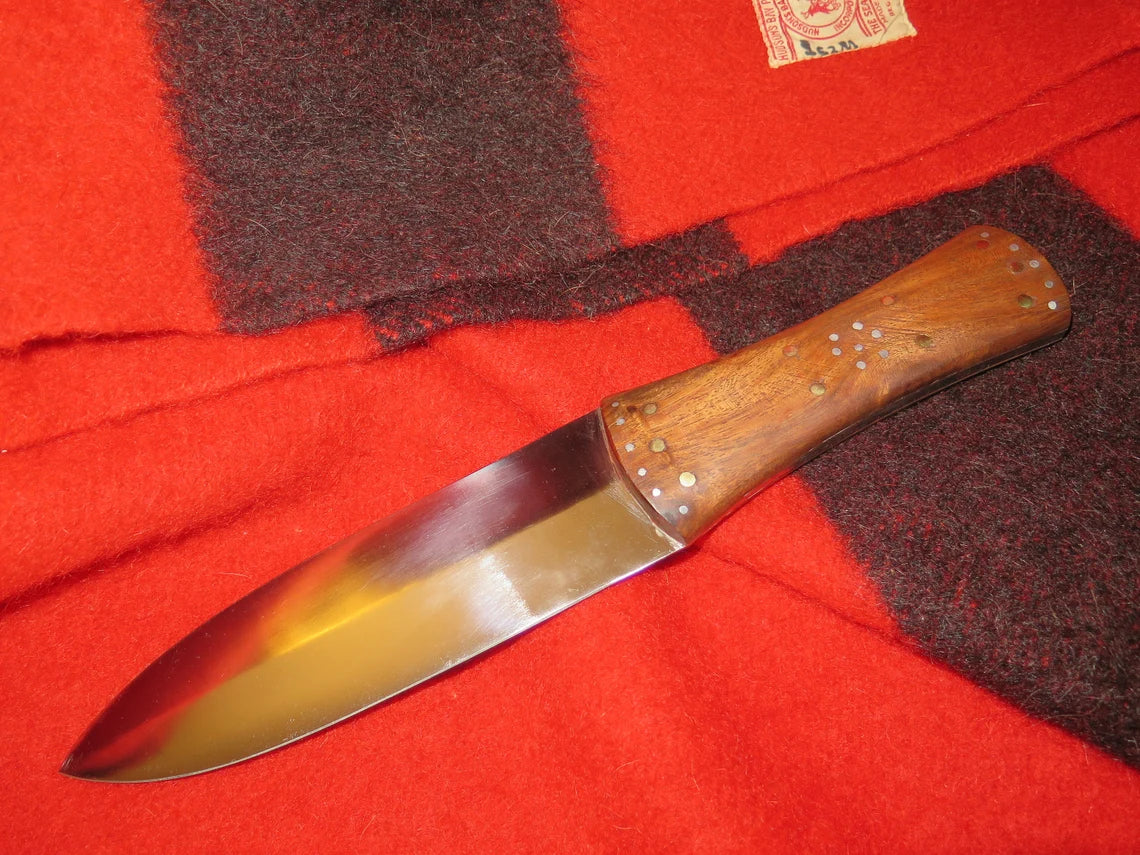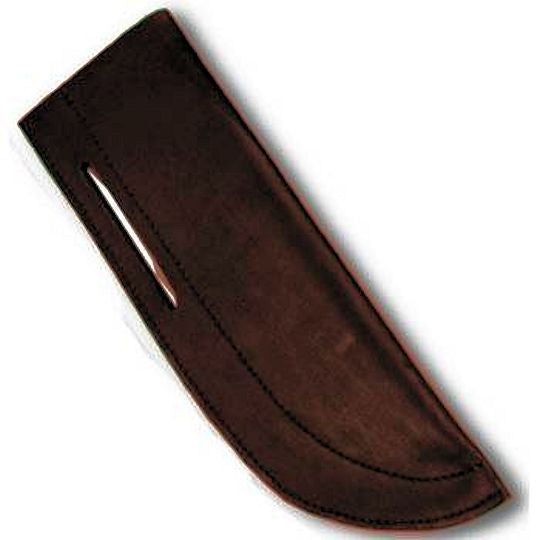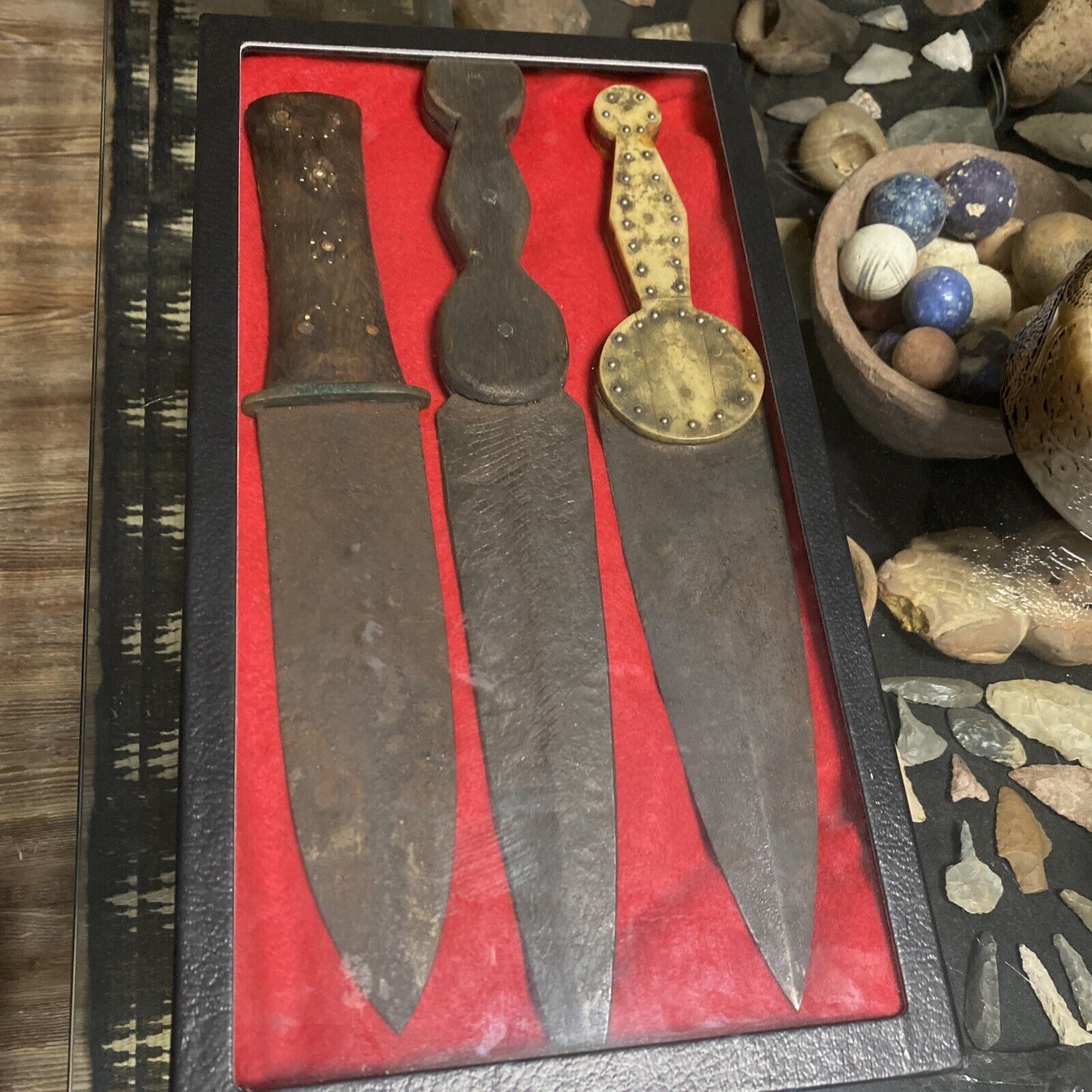Native American Hudson Bay Trade Beavertail Knife 7” Double-Edged Blade - Hand-forged Carbon Steel Authentic Cheyenne Leather Sheath
Native American Hudson Bay Trade Beavertail Knife 7” Double-Edged Blade - Hand-forged Carbon Steel Authentic Cheyenne Leather Sheath
Couldn't load pickup availability
Description:
PLEASE NOTE: SALE OF ANY KNIVES IN MY SHOP WILL ONLY BE FINAL AFTER WE HAVE HAD COMMUNICATION ABOUT KNIFE. I do not mean to sound rude, but have had sales where buyers did not read description accurately. Before you purchase this knife. Thank you
THIS IS A PRIMITIVE HANDMADE INDIAN TRADE KNIFE PATTERNED AFTER AN OLD INDIAN MADE EXAMPLE. A HAND FORGED BLADE WITH A RIVETED HARDWOOD HANDLE AND DECORATIVE BRASS PINS. A FINE 7″ BLADE WITH OVERALL LENGTH APPROX. 12″. A GREAT ADDITION TO YOUR OUTFIT. SHEATH INCLUDED.
Product Sheath Details
An authentic leather sheath taken from an original Cheyenne piece, this one fits the same type knives as our fancier "Blackfoot" and features triangular belt slot and buckskin thongs at the tip. 10" overall length and 3-1/2" width will carry knives from 9" to 14" in overall length. Made from distressed look, oil tanned cowhide.
www.akitradingpost.com
Beaver Tail Knife Native Americans often imitated shapes from nature when they crafted objects. Inspired by the beaver's tail for which it is named, this carbon steel blade is of a type traded in the early years of Eastern American colonization.
Aki Trading Post's Beavertail knives are authentic reproductions of a pre-1850s Native American knife style that took its name from the shape of the blade. Our primitive handmade trade knife is patterned after an old Indian made example that had wide distribution in the northern districts of the American fur fields. The 7" double-edged blade is hand forged from carbon steel with a 1/4'" Spine and finished off with beautiful, dark hardwood scales attached with heavy brass pins. Smaller decorative nails surround the pins, accenting the handle and creating an authentic style knife. Approximately 12" overall.
They were a common but important trade item offered by various fur trading firms, including the American Fur Company, the Northwest Company, Pierre Chouteau Jr. & Company and the Upper Missouri Company. Designed to compete with the Hudson's Bay Company's "Hand Dague", these were introduced in the 1790s. They continued in production with handles until about 1850 and continued to be supplied without handles until the end of the 19th century.
The most common sizes of Beavertail knives had 7" and 9" blades, with fewer numbers made in 8" and 10" lengths. Those sold without handles were often hafted with bear jaws, mountain sheep horn, wood, horn and copper by their Native American owners. Most were produced by cutlery firms in Sheffield, England, including such well known makers as Sorby; Jukes, Coulson; Jukes, Coulson Stokes & Co. Many were marked with the "CROSS L", an early 19th century HBC house brand.
It is also the buyers responsibility to check their state laws regarding the purchase and possession of knives. The buyer assumes all responsibility for and damages that they might incur from their purchase or possession of a knife. No buyer of knives under the age of 18.
Share
